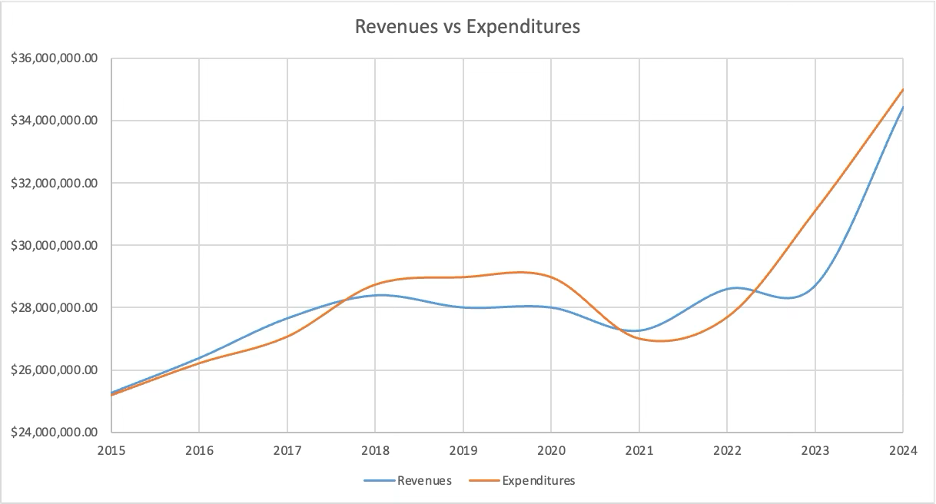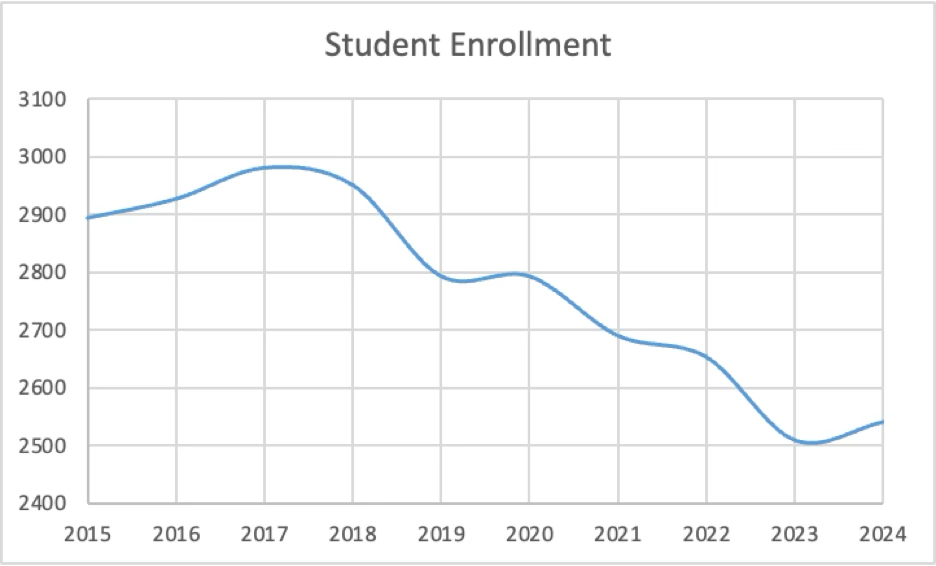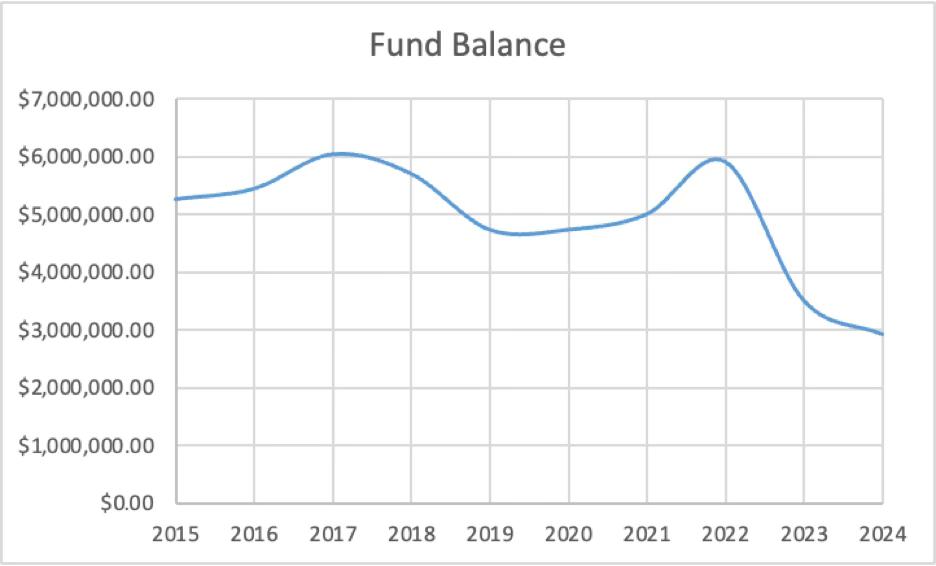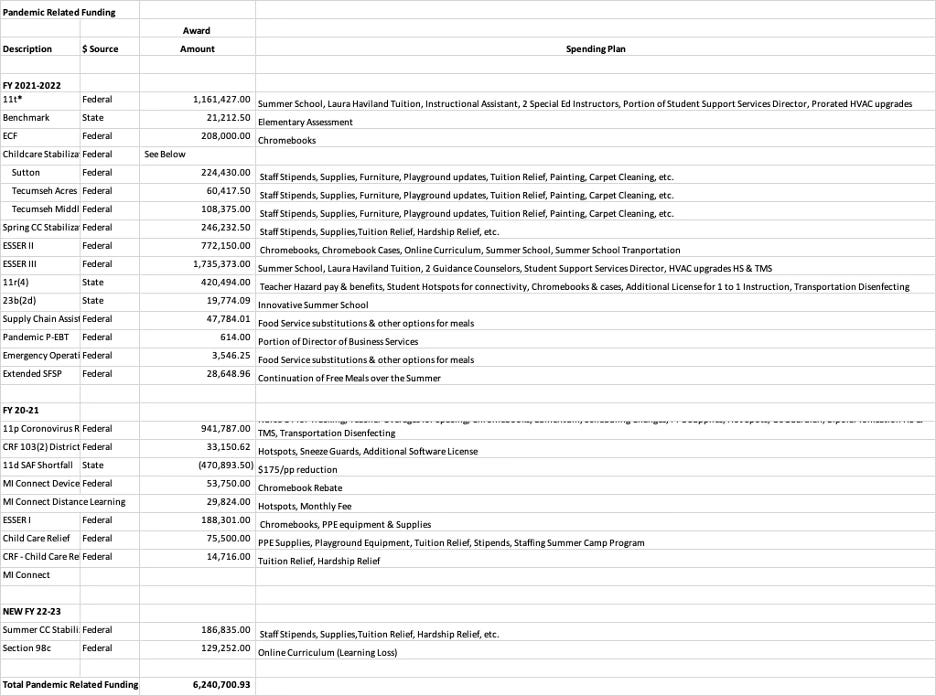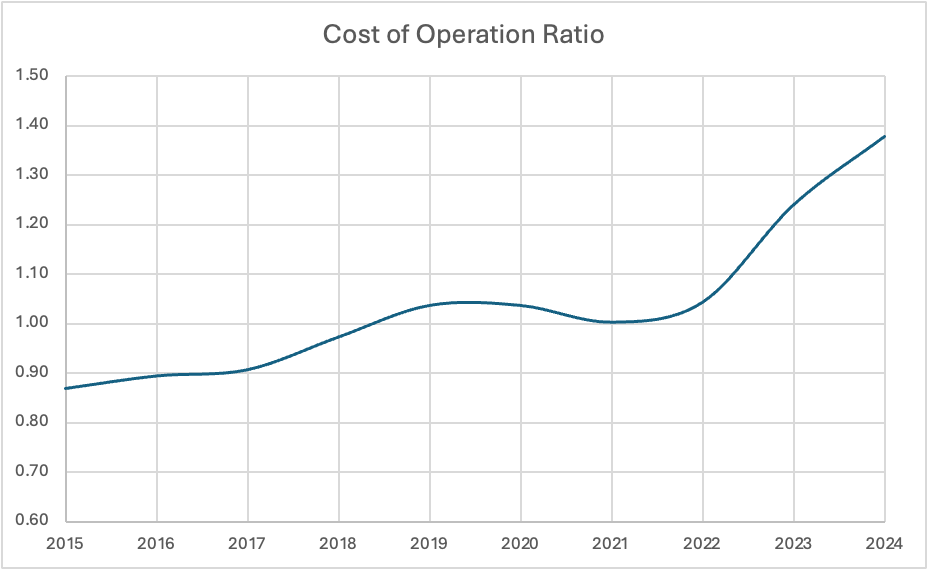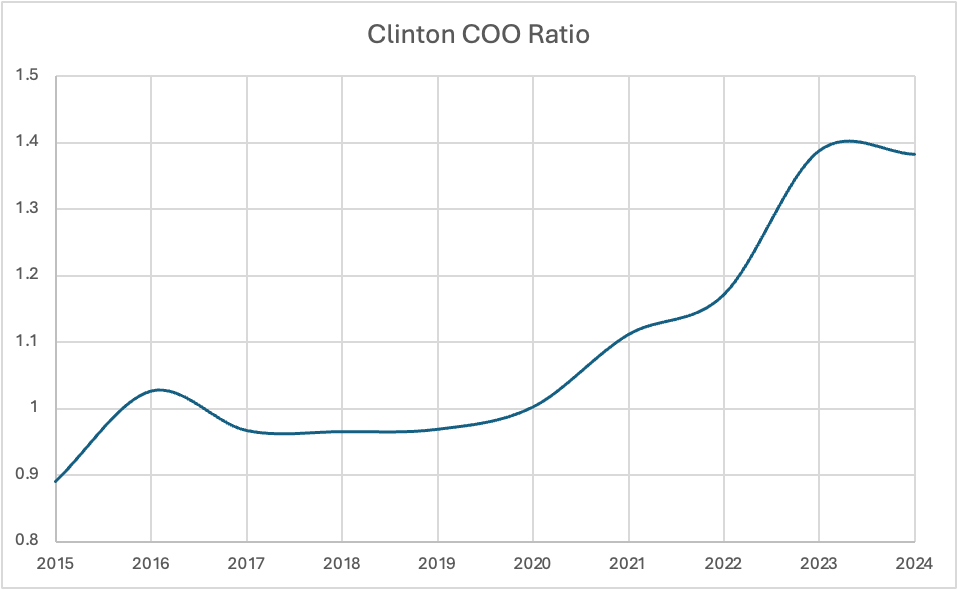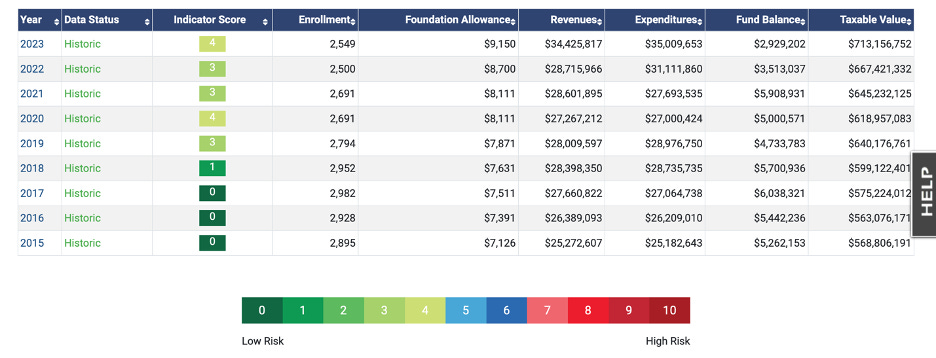Opinion: A Decade of TPS Finances
All the charts and graphs, as promised
As the new year draws closer, Tecumseh will roll into 2025 with some fresh faces on the school board with our new superintendent, Matt Hilton, leading the way. The community passed a much-needed sinking fund to repair our school facilities. While there is plenty of hope for the future, there are also harsh realities we must face. As promised, I have compiled ten years of district financial history and will present a trend analysis with recommendations to the new board.
Note: All data was gathered from the Munetrix website, which is publicly available to anyone. I wish to give a huge thanks to our Director of Business Services, Kelli Glenn. Kelli sat down with me as a candidate to show me where to find this data and to explain any nuances specific to education. I genuinely appreciate her guidance.
The chart below shows revenues versus expenditures since 2015. TPS shows a steady increase in both from 2015-2018 during the Roger Hart years, with revenue exceeding expenditures. In 2018, following the Simpson/Brooks-led recall, we began to see revenue fall below expenditures. After a few fluctuations, likely due to COVID, we see expenditures begin to skyrocket along with, but still exceeding, revenue.
Now let’s look at student enrollment, which largely dictates district revenue. Once again, from 2015 to 2018, we see positive numbers: student enrollment increased every year, driving revenue increases. In 2018, we begin to see student enrollment drop for the first time. This drop occurs before the pandemic, and continues until this year.
The fund balance can be considered our district’s savings account. This is the pot of money from which we pay for emergency expenses and cover any budget shortfalls. Once more, we see a steady, responsible increase from 2015-2018, followed by an overall decline. You may notice that the fund balance briefly returns to 2017 levels during the COVID years, likely explained by the $6m in COVID funds the district received.
A detailed list of how COVID funds were spent is shown below. Expenses are in line with what one might expect for dealing with a pandemic: Chromebooks, extending free lunches, hazard pay for teachers, etc. COVID funds began in 2021, and the graph clearly shows when it ended: 2022-2023. The precipitous drop in fund balance began when the “free money” ended. It is safe to say that, without COVID funds, our fund balance has decreased steadily since 2018.
Finally, we’ll look at a metric I designed called the cost of operation ratio, expressed as (C/E)/10k, where C = cost, and E = enrollment. This graph shows expenditures related to enrollment via an increase or decrease in cost of education (everything from teacher salary to bus fuel). While a gradual increase is no cause for alarm, the drastic upward trend beginning in 2022 may be. While our neighbor Clinton shows a similar rise, theirs peak in 2023. Ours does not. This is unsustainable.
In finance, these trends represent “risk”. Munetrix, a website used to retrieve school financial data, assigns a risk rating to each district. Again, we see perfect “low risk” scores from 2015-2018 during the Roger Hart years, creeping up to medium risk in 2024. Our neighbors in Clinton have an opposite trend, currently at a 0 (low risk). By every metric, we cannot sustain the current path. We are losing students. We are losing revenue. Our costs are increasing.
During the election, several excuses were batted around for the worsening financial trouble. One board member claimed she inherited a “$1.5m debt”. While her terminology was incorrect (2018 saw a budget deficit, not debt), the new board certainly faced challenges. Were they inherited, or self-inflicted? MLive reported shortly after the recall that, “The district has lost 200 students in two years - around 100 of those in the past year due to school of choice.”
Source: Make Tecumseh Great Again
MLive also detailed a timeline of post-recall scandals that likely did not help enrollment.
Source: Timeline of Tumult
In defense of the recent board, there are other contributing factors to our deficit outside of student loss. There was a demonstrably unfair redistribution of state education funds, benefiting districts like Onsted while hurting Tecumseh. There was a shockingly low fund increase from a Democratic-controlled legislature. Some felt that the previous board instituted too many changes too quickly, while others feel opposition to their changes was instigated for political gain. There are many factors, but the result is the same.
The sinking fund, recently passed with a thin majority (and notably, by short-term renters) cannot legally cover our deficit as it can only cover new infrastructure expenses. Additional funds will be freed up, but our reserves are almost spent. The board has only three choices to correct these trends:
Increase students (revenue)
Decrease staff (layoffs)
Raise taxes further (highly unlikely to pass)
My recommendations to the board are as follows:
Admit that losing students hurts the district. Identify and resolve their reasons for leaving where possible.
Embrace the homeschool community. Find mutually beneficial solutions so we all win.
Accept the trends working against us. Birthrates are declining, residents are fleeing Michigan, and homeschooling is now mainstream.
Finally, on a personal note, it was a TPS school that was the deciding factor in my family remaining here beyond 2022. I am continually impressed by the dedication of the educators and in this district. We owe it to the community and to our educators to bring our fiscal house back in order. I’m confident that we will do so under our new leadership.


